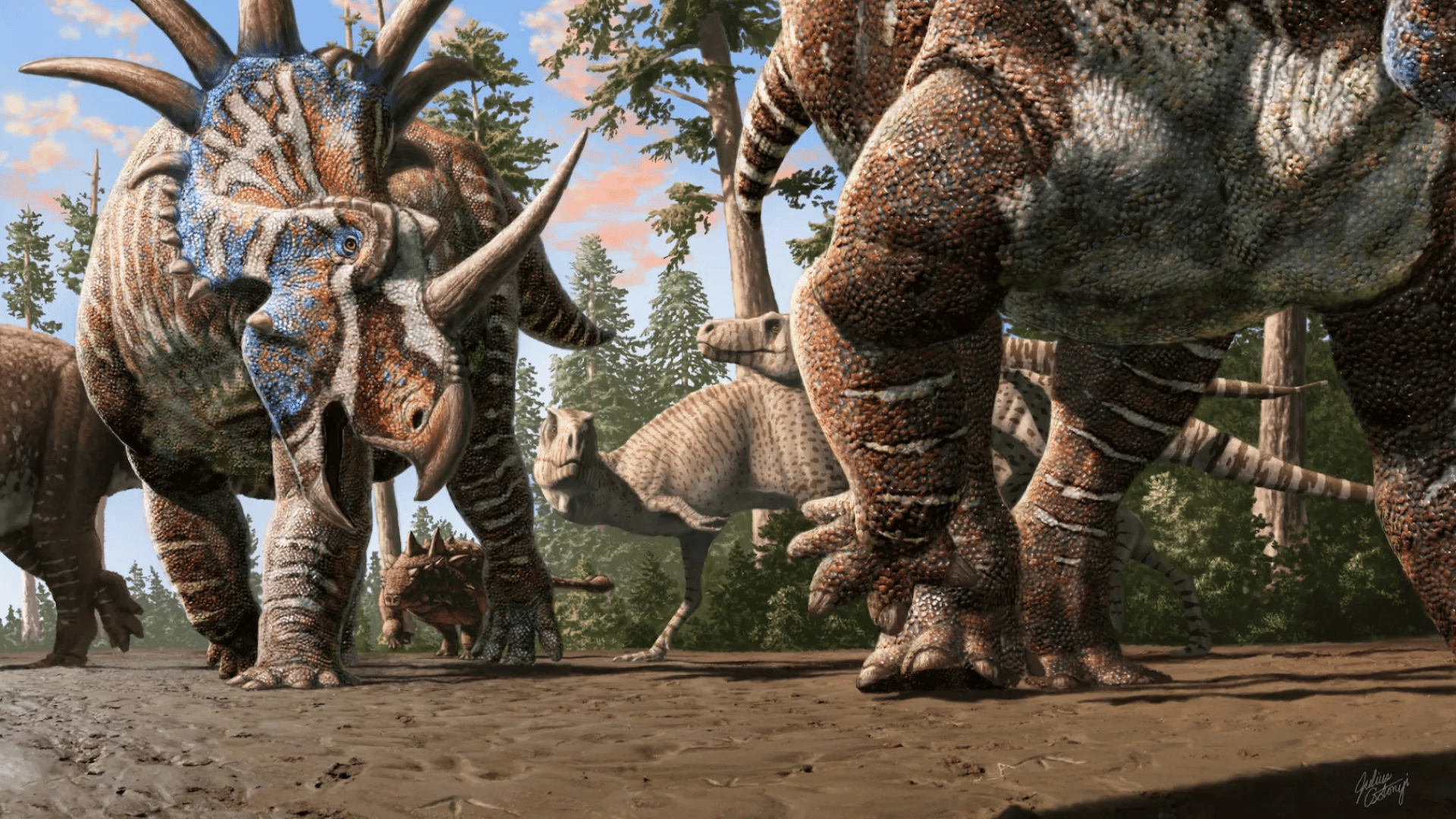New fossil evidence may confirm that dinosaurs traveled in multi-species herds, similar to modern animals like zebras and wildebeests. A study published in the journal PLOS One detailed the findings made at the Dinosaur Provincial Park UNESCO World Heritage Site.
Did Dinosaurs Move in Mixed Herds?

Zoologists believe blended animal communities function as a means of mutual defense against predators. Recently discovered footprints in Alberta, Canada, have led paleontologists to speculate that dinosaurs may have similarly participated in multi-species herding patterns.
According to Popular Science, a team of international colleagues visited the park for a field course and discovered at least 20 full and partial dinosaur footprints preserved in an approximately 312-square-foot section of sediment.
Notably, unlike previous discoveries, the footprints belonged to multiple species of dinosaurs. A total of 13 prints were linked to at least five ceratopsian (horned) dinosaurs walking side-by-side, while another grouping likely indicates the presence of an ankylosaurid among them. One footprint also belonged to an unidentified carnivorous dinosaur.
“It was incredibly exciting to be walking in the footsteps of dinosaurs 76 million years after they laid them down,” University of Reading paleontologist and study co-author Brian Pickles said in a statement.
The team also discovered the footprints of two large tyrannosaurs nearby, leading them to believe they were stalking the other group of dinosaurs. The excavation hasn’t resulted in any evidence of an outcome to this exchange.
“The tyrannosaur tracks give the sense that they were really eyeing up the herd, which is a pretty chilling thought, but we don’t know for certain whether they actually crossed paths,” stated University of New England paleontologist Phil Bell.
Researchers hope to locate more areas that potentially once held multi-species herding patterns for further study.
“Using the new search images for these footprints, we have been able to discover several more tracksites within the varied terrain of the Park,” Pickles said. “I am sure [they] will tell us even more about how these fascinating creatures interacted with each other and behaved in their natural environment.”


